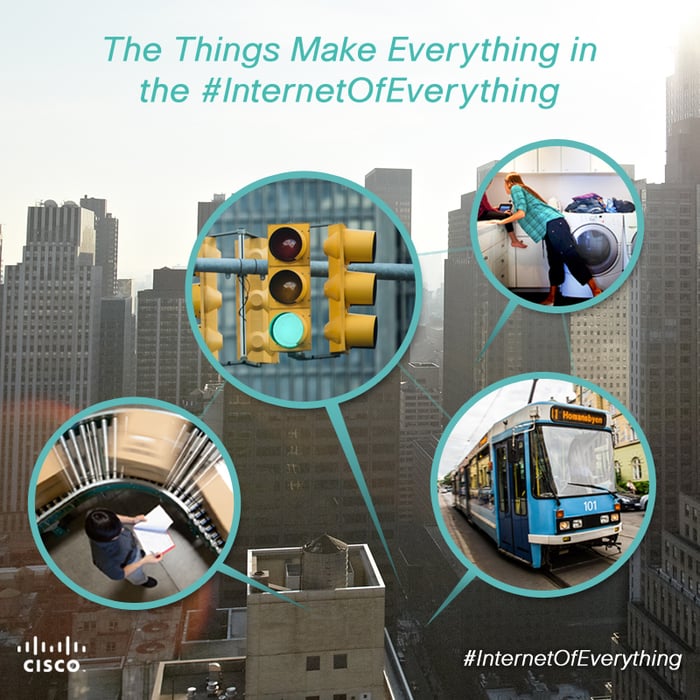 Set expectations to maximum peak. Source: Gartner.
Set expectations to maximum peak. Source: Gartner.
Before new technologies become mainstream, there's often a tendency for two camps to rise up: those who believe the tech will revolutionize the world, and others who think it's completely overhyped.
The Internet of Things -- in which devices and formerly noncommunicative things (i.e., cars, washing machines, packages, etc.) communicate with each other and us -- is one such polarizing technology.
Last week, Gartner released its annual Hype Cycle report, declaring the Internet of Things has reached the "peak of inflated expectations." But what does the research firm mean by this, and what hurdles does the Internet of Things, or IoT, face going forward?
What Gartner really thinks
The Gartner report says "The Internet of Things and the concept of blurring the physical and virtual worlds are strong concepts in this stage," adding that it "has the potential to transform industries and the way we live and work."

Source: Cisco
So when Gartner says the Internet of Things has reached 'peak inflated expectations', it doesn't mean the innovations around IoT are overblown, or somehow overhyped.
In fact, Gartner believes IoT will become commonplace in about five to 10 years and generate $300 billion in revenue for suppliers by 2020, and that 26 billion Internet of Things installed units will be online by the same time.
It's already well on its way.
What's happening in IoT
The industrial sector was one of the earliest adopters of the Internet of Things, though it may be referred to there as the Industrial Internet or machine-to-machine, or M2M, technology.
General Electric is tapping IoT with its own proprietary app software, Predix, which helps machines collect information from sensors. A Brazilian airline already uses Predix to efficiently track flights and minimize fuel usage, and another company uses the software to decide when to supply power from wind turbines.
But software is only part of the IoT equation. Inexpensive sensors and the systems that connect them are instrumental as well.

Sierra Wireless technology is used in Tesla's Model S. Source: Tesla.
Sierra Wireless makes wireless communication modules and a cloud management system for M2M systems. The company's technology connects Tesla's Model S to AT&T's network, allowing the automaker to make changes to vehicles' software remotely.
While Tesla is on the cutting edge of this type of connectivity, Sierra's tech is also found in vehicles from Ford, BMW, and other companies. Right now, Sierra Wireless accounts for about 34% of the global embedded cellular M2M module business.
In the transportation sector, Internet of Things technology will also bring more communication between cars. Vehicle-to-vehicle, or V2V, communication is one of the next big steps in vehicle safety, and just this week the National Highway Traffic Safety Administration issued an advance notice of proposed rule-making standards for V2V use.
This tech will eventually allows cars to communicate their location, speed, trajectory, and other data to other vehicles, and pair with safety features to help drivers avoid accidents.
 Source: NHTSA.
Source: NHTSA.
Specifically, two applications are being considered. In one, called Left Turn Assist, two cars communicate to each other and can warn a driver if it's not safe to make a left turn in front of an oncoming vehicle. The other, called Intersection Movement Assist, determines if there's a high probability of a collision and warns a driver if it's not safe to enter an intersection. The National Highway Traffic Safety Administration said these two technologies could prevent up to 592,000 crashes and save 1,083 lives each year.
While the Internet of Things' impact on the industrial and transportation sectors may seem too far removed for average consumers, the tech is quickly moving into our homes.

Source: Apple.
Samsung's recent purchase of the connected home company SmartThings, Apple's upcoming launch of its HomeKit platform, and Google's purchase of connected thermostat and smoke detector company Nest Labs are all part of IoT in the home.
Apple wants its iPads and iPhones to be the go-to devices for controlling home automation by utilizing Siri. Next month, Apple's new iOS 8 will allow voice commands to lock connected door locks, turn off lights, and adjust the temperature on a connected thermostat.
Google's Nest and Samsung's SmartThings' platforms will have similar features, with each company fighting for control over third-party communication.
But even as industry, transportation, and now personal homes are using IoT tech, there are still some significant hurdles to overcome.
Foolish thoughts
The most obvious problem with the Internet of Things is safety. That's why Intel, Cisco, GE, and others started the Industrial Internet Consortium, which is working on security standards for IoT. But with so many devices, sensors, and cloud systems out there, there's plenty of work to be done before the Internet of Things is as secure as it needs to be.
As with any technology, security will always be a serious issue, but it's hardly a reason to slow innovation.
So while the Internet of Things might have reached its peak of inflated expectations, companies are clearly using technology to connect devices like never before, and in very practical ways. It's easy to overhype the promise of new tech, but it appears IoT is already proving the skeptics wrong.




